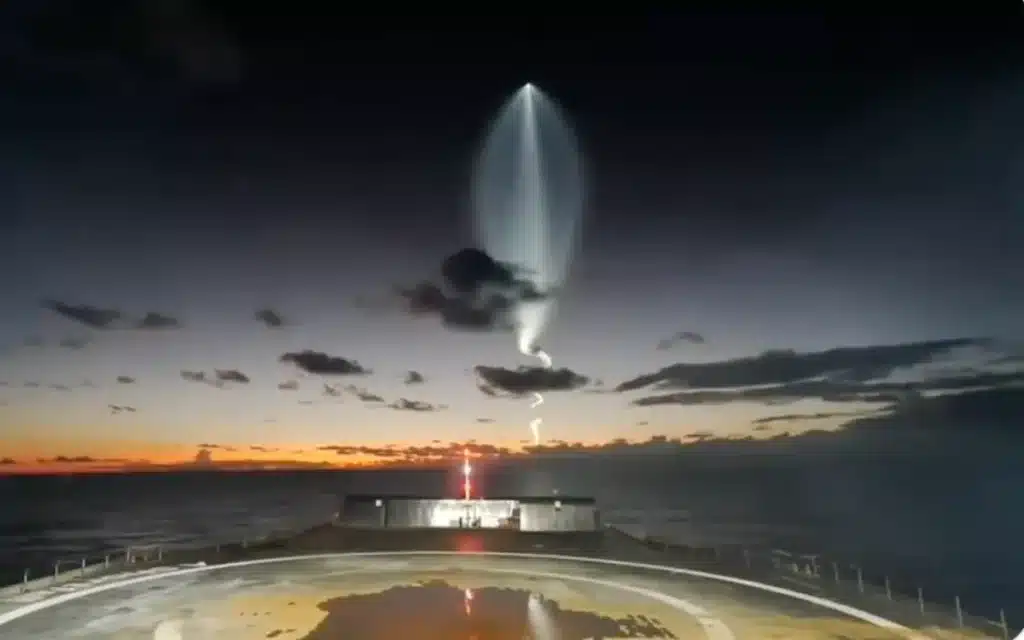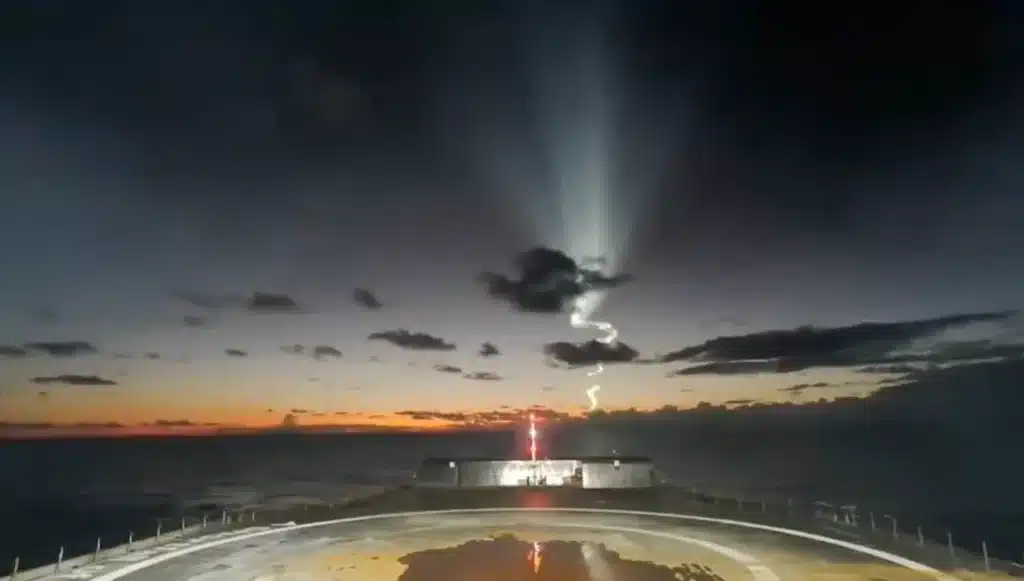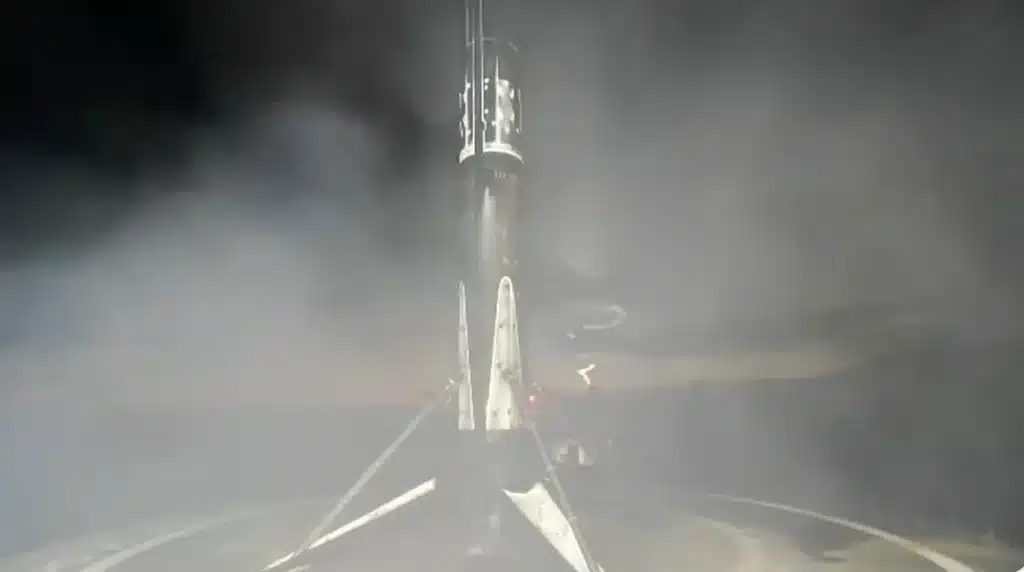SpaceX droneship captures exquisite view of Falcon 9 launch and landing
- This stunning footage from the SpaceX droneship footage captures Falcon 9 in action
- Filmed back in 2022, it’s still in action and as busy today with a launch only this month
- The mission was labelled Intelsat G-33/G-34
Published on Mar 20, 2024 at 8:20 PM (UTC+4)
by Amelia Jean Hershman-Jones
Last updated on Mar 21, 2024 at 7:01 PM (UTC+4)
Edited by
Tom Wood
This stunning footage from the SpaceX droneship footage captured the 14th launch and landing of Falcon 9.
Filmed back in 2022, it’s still in action and as busy today with a launch taking place just this month.
The reusable craft launched the Intelsat G-33/G-34 mission on 8 October 2022.

READ MORE! NASA scientist who viewed first voyager images saw something that gave him ‘chills’
The 2022 mission took off from the Cape Canaveral Space Force Station in Florida.
As the ‘first orbital class rocket capable of reflight‘, this flight marked the booster’s 14th launch and landing.
And, just as the Falcon 9 lit up the sky ahead of returning to Earth earlier this month – it was a stunning display.
Posted to X by SpaceX back in October 2022, the sped-up footage was initially livestreamed from their droneship.
It was sitting around 600km (373m) off the coast in the Atlantic Ocean as the booster launched at sunset.
The light of the atmosphere reflecting off the rocket plume created a rare ‘jellyfish’ effect.
Nine minutes after it launched the screen explodes into flames as the booster lowers into view, followed by the spacecraft landing perfectly on the droneship.
Capturing the action from an entirely different, but equally stunning angle, a flight crew member accidentally caught a Falcon 9 liftoff from their seat in the sky.
The latest SpaceX mission was on 14 March and a bid to launch the world’s biggest rocket in a test to finally reach Mars.

It’s the Starship rocket’s third test from SpaceX’s Starbase facility in Boca Chica, Texas.
It measures a massive 120 meters in height (roughly).
It was the 319th launch for Elon Musk’s SpaceX.
Previously SpaceX’s Dragon completed ‘splashdown’ as the Crew-7 Mission returned to Earth.
Sadly two previous attempts to fly the uncrewed spacecraft from Texas to Hawaii ended in high-altitude explosions.

The SpaceX Starship rocket was seen enveloped by plasma as it came back into Earth’s atmosphere last Thursday (14 March).
It was the third and most ambitious test flight to date.
“Watch the super hot plasma field grow as Starship re-enters the atmosphere,” Musk said to caption the video he posted to X.
According to SpaceX’s live stream commentator: “This is the furthest and fastest that Starship has ever flown”.
However, the positivity was a mixed bag as SpaceX later confirmed it lost Starship after it fell to Earth.
It’s presumed to have landed in the Indian Ocean as planned.
What that likely means is that the Starship broke up as it came down and wasn’t able to perform a bellyflop at speed as planned.
The mission has already been deemed a success, getting well beyond the milestones achieved on the two previous test flights last year.
All 33 engines at the base of the booster fired up and took the vehicle to the anticipated staging point.
“The ship has been lost. So no splashdown today,” said SpaceX’s Dan Huot shortly after.
“But again, it’s incredible to see how much further we got this time around.”
“SpaceX has come a long way,” Musk added.
There’s still a long way to go, though.
DISCOVER SBX CARS: The global premium car auction platform powered by Supercar Blondie

London-based Amelia cut her journalistic teeth covering all things lifestyle, wellness, and luxury in the UK capital. Fast-forward a decade and the senior content writer and editor has put pen to paper for glossy magazines, busy newsrooms, and coveted brands. When her OOO is on from writing about cars and heading up on-site SEO you can find her spending quality time with her young family, in the gym, or exploring the city she loves.




